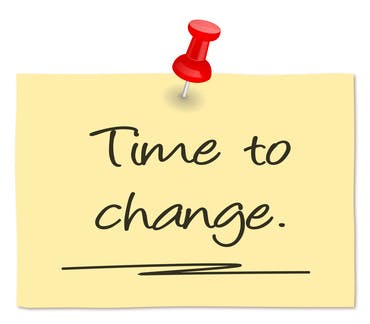As CEO of a marketing company, I have the opportunity to work with clients large and small to implement LinkedIn-based, employee-first social media programs.
Over the past three years, I’ve noticed several important trends social media is having on business.
Of note: the employer/employee value proposition and the role of HR are changing in ways both profound and permanent. Here’s how:
1. The org chart accelerates its phase out
A main function of the org chart is to allow people in a complex organization to work together effectively regardless of the personal relationships they share. By clarifying where resources are and who controls access to them, people who don’t even know one another can come together to accomplish complex tasks.
In an org chart world, skills and resource access lead — relationships follow.
But what’s new about social media is how it mixes up our personal and professional networks.
Corporate directories may have augmented formal job descriptions with self-published bios, thus making the path to resources more friendly, but social media elevates the relationship in a new way. By making informal networks knowable, predictable, and navigable, the nature of power structures, politics, team dynamics, and information flow within an organization all change.
Executive and professional development need to be retooled as a result.
2. Lines between professional and personal are gone
For two generations, professionals have put their world in boxes — work over here, life over there — and tried to balance the two. Work-life balance never really worked too well, but it was the best thing we had to work from, and we did what we could with it.
That is, until social media came along and blew the whole thing up.
Cronyism has long been a bane of merit-based capitalism, but in a world of social media, where personal and professional relationships blend into a single, holistic, profersonal™ network, it can be exceedingly difficult to tell where professional relationship ends and a personal one begins.
Executives, business development professionals, and many recruiters have long lived with this overlap as part of their work. But for the 9-to-5 employee, the ambiguity wrought by this overlap is often unwelcome and unnerving.
The firewalls organizations put up to ensure objective decision making need to be rethought.
3. Walls are being replaced with windows – and they’re open
Before social media, professionals could limit communication to their co-workers with a fair level of certainty. Social media’s always-on connectivity now makes it much more difficult to keep competitors and clients from catching wind of internal notes — either because we’re connected with them directly, or because they’re friends of friends.
But that’s not really the issue.
While HR may see social media as a communication risk, the real risk of “open windows” is to corporate structure and hiring. If a manager can look through the window to find someone with the skills she needs — using LinkedIn or Facebook — easier than she can find them within the walls of the organization, then that’s what she’s going to do. And if getting a consultant’s SOW (scope of work) approved by procurement is easier than getting a job requisition approved and sourced… well, this is an easy story to figure out.
HR operates based on laws and customs that were built on the presumption of walls. Those laws and customs are embarrassingly behind the times and need to change. Otherwise, HR will find itself struggling to maintain consistent employment standards.
4. Development takes a step backward
Social media allows people to escape from anything they don’t like and retreat into a world of familiar ideas, problems, and banter. What this means is, people are growing up later.
In a you’ll-laugh-because-if-you-don’t-you’ll-cry observation told by Sherry Turkle, author of Alone Together, two 15-year-olds at a party no longer have to work out the awkward moments that sometimes come with face-to-face relationships; when they hit the awkward, they retreat to their phones and post status updates: “Just saw so-and-so… AWKWARD!”
After doing this for a while, those teens not only fail to develop key skills, they fail to develop the ability to develop!
The impact for HR? These people’s older siblings had the same issues and are in the workforce. From a maturity perspective, 35 is the new 22. Get ready to train on basic skills.
5. Data goes real-time
It may not be “Big Data,” but it’s certainly Real-Time Data. It’s what’s resonating now, and it represents perhaps the most exciting impact on HR that social media is bringing: suddenly, employees are the company’s greatest … marketing asset.
It’ll take a while for HR and marketing to come together — owns the expertise, while the other owns the asset, so there’s the makings for a turf battle there in many companies — but ultimately, this is HR’s path forward and greatest opportunity to connect a polished, professional workforce with top line revenue and bottom line results.
The future, as they say, will definitely not look like the past. But as they also say, in change lies opportunity — and more for HR than probably anywhere else in the company. Corporate structure, training and development, staffing, internal communications, and even marketing and branding are all up for grabs.
For an HR practitioner who’s been waiting for the chance to make her mark, this just may be the time to shine.
